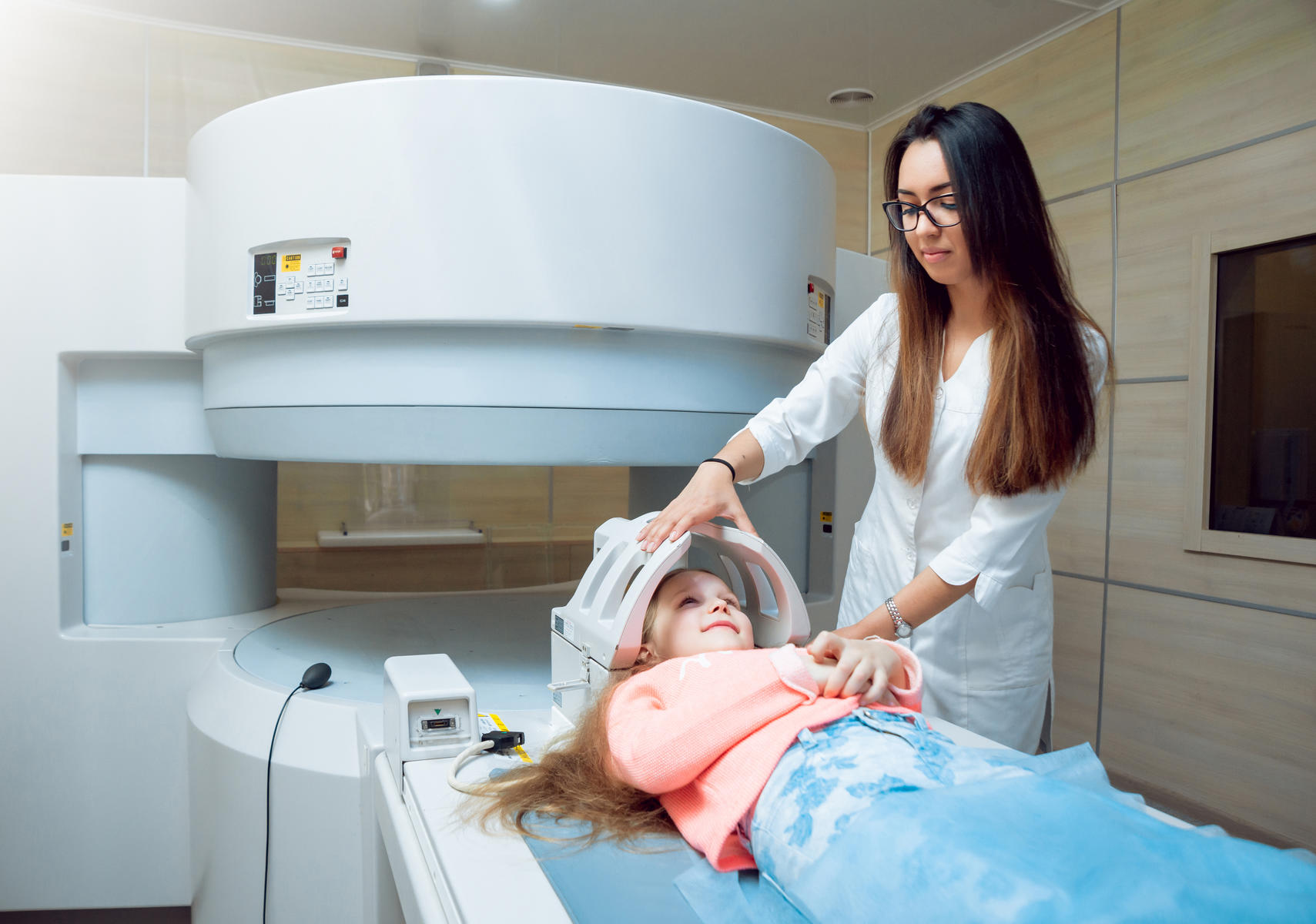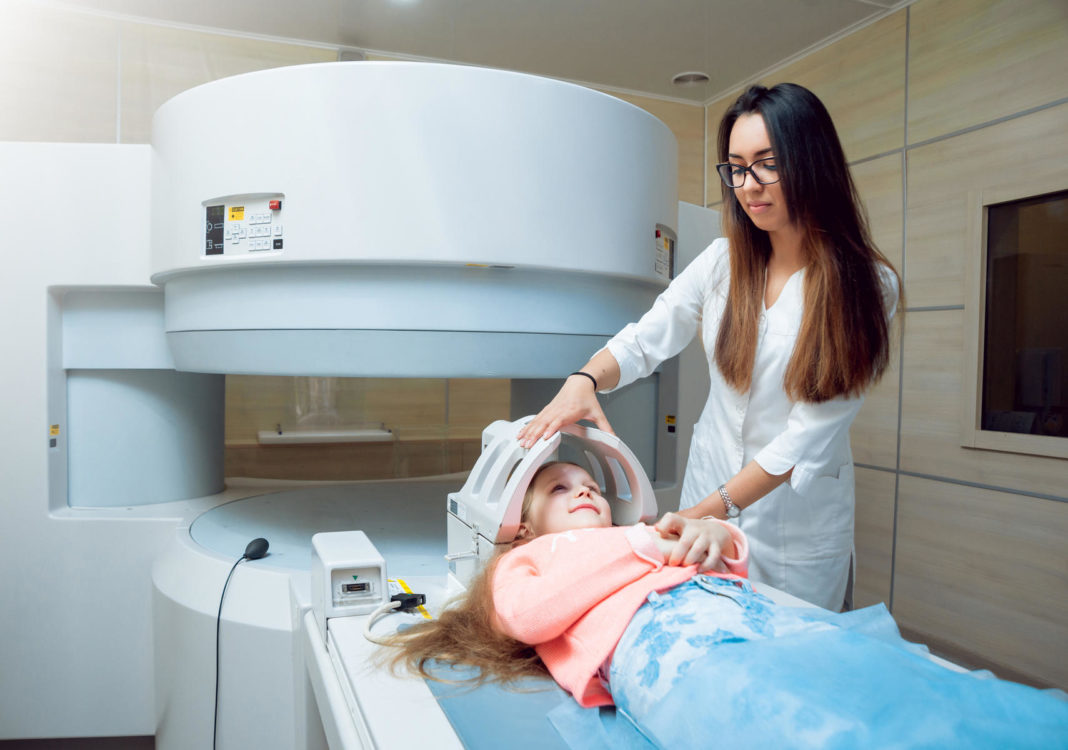
If you think pediatricians only order medical tests your kids definitively need, this might be a hard pill to swallow: “At the core of the American health-care system is an incentive to do more,” says Richard Baron, M.D., president and CEO of the American Board of Internal Medicine. In other words, “Doctors get paid when they do stuff,” says Dr. Baron. And as anyone with no health insurance or a high-deductible plan knows, that pay comes, at least in part, from the patient’s bank account.
Of course, it’s not just your wallet that can suffer from unnecessary procedures. Every body scan and skin prick your child undergoes carries risk. “Some tests can be like opening Pandora’s box,” says Alan Schroeder, M.D., associate chief of pediatric hospital medicine at Stanford University. “In some cases, they can trigger incidental findings and a cascade of additional scans and visits to specialists—and often none of it ends up being in the patient’s best interest.”
The answer isn’t to avoid your pediatrician’s office or the E.R., but rather to be frank when you’re there. Ask: Does my child really need this test? What are the risks and side effects? What happens if you watch and wait instead? (And, yes, it’s fine to ask how much the test costs and whether it’s covered by your insurance!) “Most doctors are good about saying what a test might find,” says Dr. Schroeder. “But the question you want them to answer is: How is this test going to benefit my child?” Read on to learn how to tell when six common tests are genuinely needed.
1. Swallow Study for Excess Spit-Up
More than two thirds of healthy infants have acid reflux. “It’s normal,” says Ricardo Quinonez, M.D., associate professor of pediatric hospital medicine at Texas Children’s Hospital, in Houston. Yet with increasing frequency in recent decades, pediatricians have been using a swallow study to diagnose reflux (also known as gastroesophageal reflux disease, or GERD) as an illness. During this X-ray test, your baby drinks a barium-laced liquid and then a radiologist uses imaging to trace food moving through her esophagus and stomach. If the study confirms reflux, difficulties, the doctor may prescribe acid-blocking medications. Prescriptions have skyrocketed: One study in Pediatric Drugs noted a more than sevenfold increase in just five years. In 2013 the American Academy of Pediatrics (AAP) warned that doctors may be overdiagnosing babies with GERD, and overmedicating infants as a result. Reflux drugs can increase a baby’s risk of certain GI and respiratory infections and prevent calcium and iron absorption, per Mayo Clinic research.
When To Test: If your baby is spitting up so much that she’s not gaining weight, is getting dehydrated, or having breathing those are signs she needs intervention. Otherwise, give your baby smaller, more-frequent feedings; hold her upright for 20 minutes after feedings; and burp mid-feeding to help the situation. And rest assured that you won’t be bathed in barf forever. “As babies grow older, their reflux tends to get better on its own,” says Dr. Quinonez.
2. CT Scan for a Bump on the Head
Roughly half of children who visit hospital emergency rooms with a head injury are given a CT scan, according to Choosing Wisely, an initiative of the ABIM Foundation and Consumer Reports that aims to inform clinicians and patients about the overuse of medical resources. That’s a lot when you consider that only 1 percent of children who enter the E.R. after head trauma have suffered a serious brain injury. Because a CT scan takes multiple X-rays to create a 3-D view of the brain, the ionizing radiation it uses could slightly increase your child’s lifetime risk of cancer, especially for girls and for kids younger than age 5. One study in JAMA Pediatrics found that for children in these groups, head scans might raise their rate of leukemia by nearly 2 kids out of 10,000. And though cancer risk will always give us more reason to pause than price tags will, it’s worth noting that depending on your insurance deductible, this test could cost you around a thousand bucks.
When To Test: Skip the scan if your child seems fine. “If a child banged his head and lost consciousness, but it’s been a couple of hours and now he’s acting normally, he’s already okay,” says Dr. Schroeder. Concerned that your child’s condition might worsen later? Request a period of observation at the hospital. Six hours of waiting can be a small price to pay to skip radiation exposure. Your child only needs the CT scan if he is very sleepy or irritable, has persistent vomiting, develops a headache that gets worse, has a loss of vision or hearing, or is dizzy and loses balance. In that case, he might have a more serious head injury that could benefit from being identified with a scan. Fortunately, the majority of abnormalities (bleeds, skull fractures) seen in CT scans do not warrant surgical intervention.
3. Full-Panel Allergy Test for Sniffles or a Rash
When your kid seems to be having an allergic reaction to one thing, it’s natural to want him tested for everything “just in case.” But blood tests and skin pricks sometimes show positive results when a kid has a sensitivity and not an allergy, which is a much stronger immune reaction, says Dr. Quinonez. A child with a sensitivity can keep his life status quo (doctors actually suggest maintaining exposure to the allergen), while one with a true allergy often has to make a big sacrifice—re-homing the family pet, avoiding the outdoors, overhauling his diet—and may endure the psychological burden of constant fear. About 8 percent of the population tests positive for a peanut allergy with a blood test, for example, but only 1 percent are truly allergic and exhibit symptoms when they eat the nut.
When To Test: A precise and detailed personal and family history should be your pediatrician’s guide, says Dr. Quinonez. If your child gets the sniffles after outdoor soccer but can chomp on cashews and pet a cat without problems, then a skin prick and blood work for only outdoor allergens (like pollen) makes sense. However if she also vomited the last two times she had sesame seeds, a more comprehensive test may be needed. The same goes if she has a severe reaction—such as trouble breathing, tongue swelling, or body hives—after coming into contact with any common food allergen.
4. CT Scan for Recurring Tummy Pain
In 1998, less than 1 percent of kids who came to the emergency room with abdominal pain had a CT scan. A decade later, that number had ballooned to a little more than 15 percent. Although ultrasound, not a CT scan, is the recommended first-line imaging tool for appendicitis, more than 40 percent of children still receive CT scans as part of their preoperative evaluation. And when a select group of emergency rooms cut their CT use for pediatric abdominal pain by 25 percent over a two-year period, they didn’t see any increase in misdiagnoses or complications.
When To Test: Say yes only after your child has had a thorough physical exam. Everything from tenderness to the stomach’s shape and firmness are telling signs of what’s happening inside, including whether a child is just constipated—the most common gastrointestinal E.R. diagnosis. If the doctor suspects a noncritical illness, watchful waiting in the hospital for a couple of hours—perhaps along with targeted blood work—is often best, says Eric Coon, M.D., a pediatric hospitalist at Primary Children’s Hospital, in Salt Lake City.
5. Cholesterol Test for a Hot-Dogs-and-Pizza Diet
If the pediatrician suggests blood work to test your child’s LDL (bad) cholesterol level, she may be following the AAP’s recently updated guidelines, which call for screening all kids between ages 9 and 11, and some children much earlier. The test is intended to identify the small number of kids who have a genetic disorder called familial hypercholesterolemia and to catch those who have high cholesterol because of poor nutrition and lack of exercise. Children who test positive are supposed to receive weight-loss counseling and in some cases, cholesterol-lowering drugs. “But very few pediatricians are following these guidelines universally,” says Dr. Schroeder. In a randomized survey of more than 1,600 pediatricians, less than 10 percent said they had started patients on prescription medication, even though the vast majority said they believed medication was appropriate for children unresponsive to lifestyle changes. That may be because high cholesterol has barely been investigated in children, even though it’s been well studied in adults. When it comes to kids, all doctors know for sure is that the drugs have both long-term and short-term side effects, and that a diagnosis may make mealtimes more fraught for kids and parents alike.
When To Test: Talk to your child’s pediatrician about whether a cholesterol test makes sense based on your family’s history and your kid’s health, diet, and weight. If her only suggestion would be to double down on lean meats, vegetables, and physical exercise, you can work on those habits sans needle. One exception: “Some doctors say a cholesterol test can motivate older kids to modify their diet,” says Dr. Schroeder. Since a blood draw isn’t pricey and rarely causes side effects, it might be worth a try if you have a fast-food-obsessed tween at home.
6. Brain Imaging for a Seizure During a High Fever
A spike in body temperature can trigger convulsions lasting a few seconds to 15 minutes (or longer) in up to 5 percent of kids 6 months to 5 years old. “They are called simple febrile seizures and they don’t cause epilepsy or have any neurological consequences,” says Dr. Quinonez. Still, a study in Pediatric Emergency Care found that more than half of children who came to the emergency room with simple febrile seizures wound up having some sort of head imaging done, like a CT scan or an MRI.
When To Test: “With simple febrile seizures, neurologists’ guidelines are clear that the best thing to do is nothing,” says Dr. Quinonez. A CT scan raises a child’s lifetime risk of cancer, and an MRI requires sedation and carries significant costs, setting parents back more than $3,000 at some hospitals. Although a simple febrile seizure can be quite scary to witness, you should only consider imaging if the seizure was accompanied by vomiting, breathing problems, or a stiff neck, or if the doctor examines your child and notices one or more structural abnormalities of the skull, signs of head trauma, or intracranial pressure. These are all clues that your child might not be having a febrile seizure after all, and a scan can reveal what’s actually going on.
Parents Magazine


